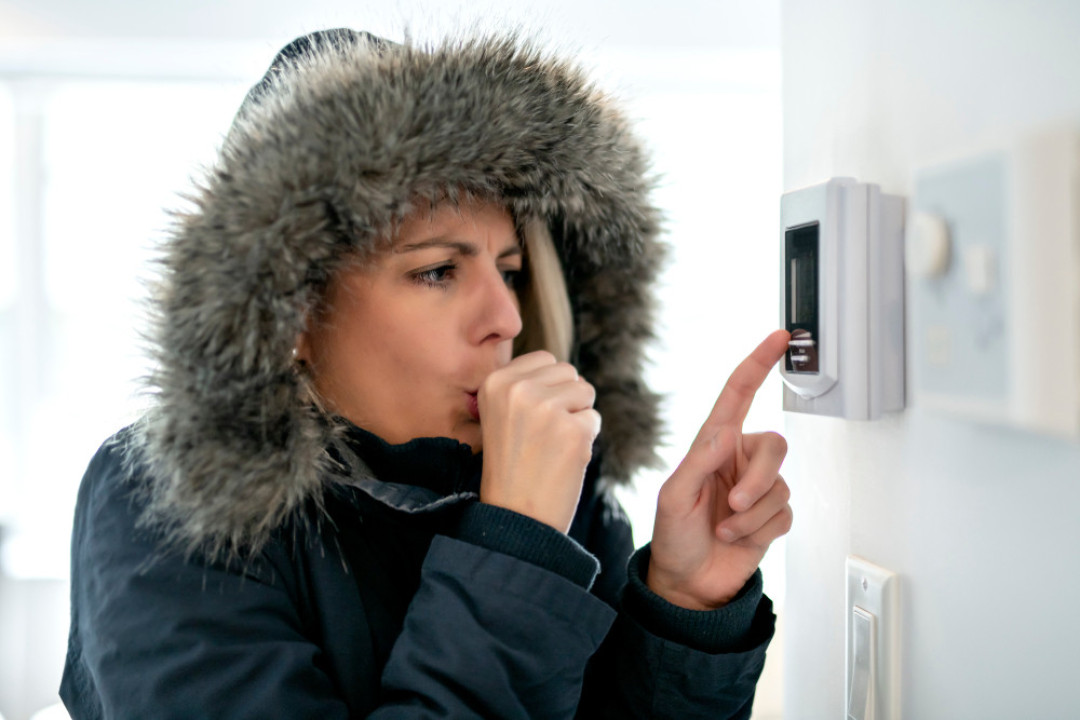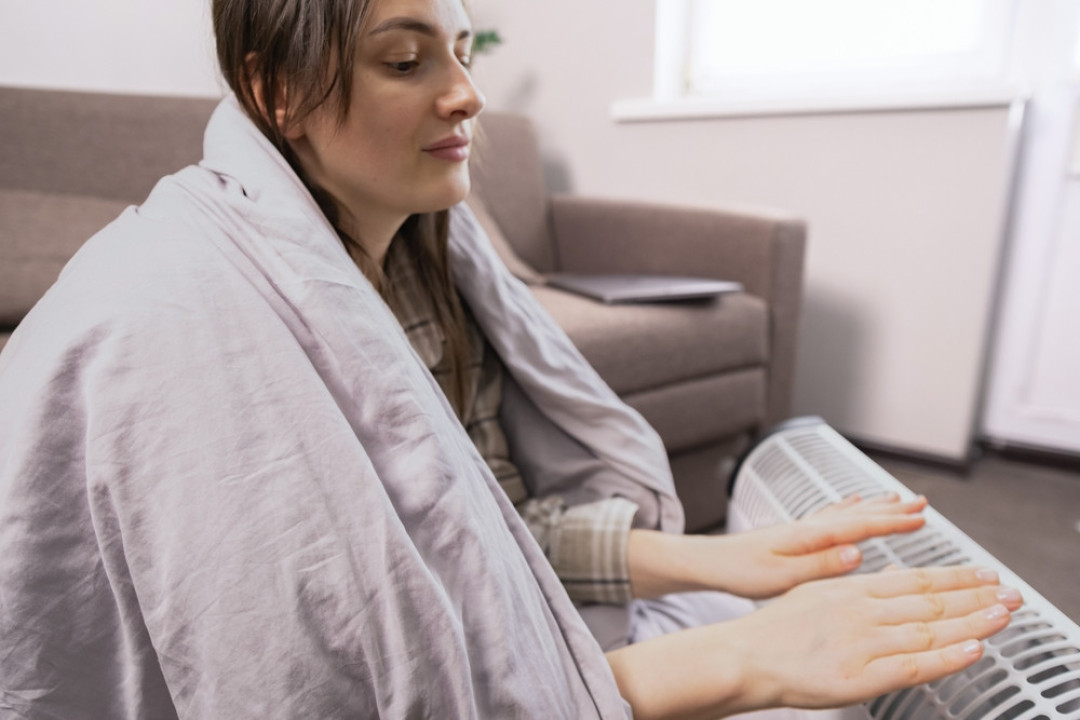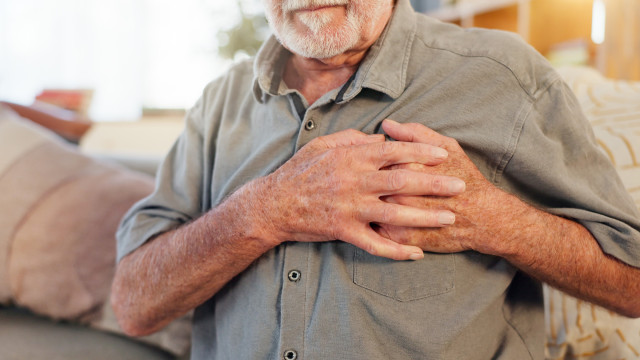




























© Getty Images
0 / 29 Fotos
Hot topic
- With the chill of winter settling in, conversations around the office thermostat and home heating schedules inevitably heat up.
© Shutterstock
1 / 29 Fotos
Lingering question
- Gender equality conversations have been rightfully front and center, but one intriguing question remains: do women truly feel the cold differently than men? This is a common experience, at least anecdotally, but what's the science behind it?
© Shutterstock
2 / 29 Fotos
Body temperature
- Many things can affect our body temperature, including what we eat and drink, medications, the time of day, and even stress. Additionally, natural variations have been recorded across different age groups and sexes.
© Shutterstock
3 / 29 Fotos
Matter of preference?
- Research by economist Thomas Chang at the University of Southern California found that women often prefer warmer work environments than men. This isn't just an office phenomenon; studies consistently show that women experience cold more acutely, both indoors and outdoors.
© Shutterstock
4 / 29 Fotos
Not exclusive to humans
- Many animal species also exhibit temperature preferences. Studies have shown that male birds and mammals frequently congregate in cooler areas, such as shade, while females and their offspring typically stay in warmer, sunnier spots.
© Shutterstock
5 / 29 Fotos
Survival of the fittest
- One theory suggests that female mammals evolved a preference for warmer environments to better care for their young. When offspring are unable to regulate their own body temperature, warmer climates allow mothers to rest and provide warmth more effectively, providing them a significant evolutionary advantage.
© Shutterstock
6 / 29 Fotos
Not that simple
- As for humans, Boris Kingma, a human thermal performance scientist at the Dutch Institute of Applied Technology, cautions against oversimplification. He emphasizes that temperature preferences can be somewhat gendered, but it's not as straightforward as saying "women prefer warmer temperatures."
© Shutterstock
7 / 29 Fotos
Ideal temperature
- Kingma emphasizes that there's actually a lot of overlap in the ideal temperature range for men and women. He points out that any existing differences are quite subtle.
© Shutterstock
8 / 29 Fotos
Other factors
- He also highlights that our preferred temperature fluctuates greatly based on our activity level and clothing. Kingma points out these factors have a more significant impact on our temperature preferences than any potential metabolic differences between sexes.
© Shutterstock
9 / 29 Fotos
Other factors
- While biological factors do play a role, it's not just about gender. Research from the National Institutes of Health found that a person's ideal temperature is primarily influenced by a complex interplay of factors, including metabolic rate, body surface area, and body fat percentage.
© Getty Images
10 / 29 Fotos
Metabolic rate
- Metabolic rate describes how quickly our body burns energy. When our metabolic rate is high, we burn food faster, generating more heat and a higher internal temperature.
© Shutterstock
11 / 29 Fotos
Women vs. men
- On average, women have a slightly lower metabolic rate than men. This means their bodies naturally produce less heat, making them potentially more susceptible to feeling cold. Studies have shown that men's metabolic rates are typically around 23% higher than women's, contributing to this difference.
© Shutterstock
12 / 29 Fotos
Muscle mass
- People with more muscle mass naturally burn more calories at rest, generating more internal heat. A 2018 study from the University of Cambridge revealed that muscle tissue is more effective at retaining heat compared to body fat.
© Shutterstock
13 / 29 Fotos
Muscle mass
- Considering that women generally have less muscle mass than men, it's not surprising that they may experience cold more intensely.
© Shutterstock
14 / 29 Fotos
Seniors feel colder
- As we age, we naturally lose muscle mass, typically around 10% per decade after age 50. This muscle loss contributes to decreased heat production, making older adults more susceptible to feeling cold. Dr. Margarita Brida, a consultant cardiologist at Royal Brompton Hospital, explains that metabolic rate also slows down with age, further reducing heat generation.
© Shutterstock
15 / 29 Fotos
Body fat
- Women typically have a thicker layer of fat beneath their skin, which can create a slight insulating barrier, making the skin feel cooler. While fat provides insulation, it can also act as a barrier, hindering the transfer of heat from the body's core to the extremities like the hands and feet.
© Shutterstock
16 / 29 Fotos
Cold hands, warm heart
- Studies have shown that women tend to have slightly higher core body temperatures compared to men, while their extremities may be cooler. This intriguing observation likely contributes to the age-old saying "cold hands, warm heart."
© Shutterstock
17 / 29 Fotos
Blood flow
- Dr. Brida suggests that women's bodies may prioritize blood flow to vital organs, such as reproductive organs, over the extremities. This redirection of blood away from the hands and feet could contribute to women experiencing colder extremities.
© Shutterstock
18 / 29 Fotos
Used to the warmth
- Because of the higher core temperatures women’s bodies are used to being warm, which can lead them to feel the cold more acutely. Studies have shown that men often find comfortable temperatures around 72°F (22.2°C), while women typically prefer temperatures closer to 77°F (25°C).
© Shutterstock
19 / 29 Fotos
Hormonal differences
- Hormonal differences between men and women play a significant role in how they experience temperature. Estrogen, in particular, can dilate blood vessels in the extremities, increasing heat loss. Progesterone can constrict blood vessels in the skin, reducing blood flow to certain areas.
© Shutterstock
20 / 29 Fotos
Cycle fluctuations
- Hormonal fluctuations throughout the menstrual cycle can significantly impact a woman's temperature regulation. These hormonal shifts can contribute to cooler extremities, with women's hands, feet, and ears often being around 5.4°F (3°C) cooler than men's.
© Shutterstock
21 / 29 Fotos
Ovulation
- Women may experience increased sensitivity to cold around the week following ovulation, when progesterone levels peak. This is because progesterone can slightly elevate core body temperature.
© Shutterstock
22 / 29 Fotos
Old challenge
- While research suggests women may experience cold differently, a key challenge remains: finding the optimal temperature in shared spaces like offices, where everyone's productivity can be affected.
© Shutterstock
23 / 29 Fotos
Men as the baseline
- A 2015 study revealed that many office thermostats are based on outdated thermal comfort models developed in the 1960s, which primarily considered the metabolic rates of men, which "may explain reports of women often feeling colder in their workplaces, or setting their home thermostats higher to feel comfortable," says Dr. Brida.
© Shutterstock
24 / 29 Fotos
Overestimation
- The study also found that these outdated models may overestimate women's metabolic rates by up to 35%, potentially contributing to their discomfort.
© Shutterstock
25 / 29 Fotos
How to solve it?
- Companies can invest in personal comfort systems to address individual temperature preferences in the workplace.
© Shutterstock
26 / 29 Fotos
How to solve it?
- Devices, such as desk fans, heated chairs, and blankets, or foot warmers, allow employees to enhance individual comfort without affecting others. They're also often more energy-efficient than central air conditioning and can improve employee satisfaction.
© Shutterstock
27 / 29 Fotos
How to solve it?
- For couples with differing temperature preferences, the "Scandinavian sleep method" (i.e. sleeping with separate blankets) offers a practical and cozy solution to achieve individual comfort. Sources: (National Geographic) (Australian Broadcasting Corporation) (Guy's and St Thomas' Specialist Care)
© Shutterstock
28 / 29 Fotos
© Getty Images
0 / 29 Fotos
Hot topic
- With the chill of winter settling in, conversations around the office thermostat and home heating schedules inevitably heat up.
© Shutterstock
1 / 29 Fotos
Lingering question
- Gender equality conversations have been rightfully front and center, but one intriguing question remains: do women truly feel the cold differently than men? This is a common experience, at least anecdotally, but what's the science behind it?
© Shutterstock
2 / 29 Fotos
Body temperature
- Many things can affect our body temperature, including what we eat and drink, medications, the time of day, and even stress. Additionally, natural variations have been recorded across different age groups and sexes.
© Shutterstock
3 / 29 Fotos
Matter of preference?
- Research by economist Thomas Chang at the University of Southern California found that women often prefer warmer work environments than men. This isn't just an office phenomenon; studies consistently show that women experience cold more acutely, both indoors and outdoors.
© Shutterstock
4 / 29 Fotos
Not exclusive to humans
- Many animal species also exhibit temperature preferences. Studies have shown that male birds and mammals frequently congregate in cooler areas, such as shade, while females and their offspring typically stay in warmer, sunnier spots.
© Shutterstock
5 / 29 Fotos
Survival of the fittest
- One theory suggests that female mammals evolved a preference for warmer environments to better care for their young. When offspring are unable to regulate their own body temperature, warmer climates allow mothers to rest and provide warmth more effectively, providing them a significant evolutionary advantage.
© Shutterstock
6 / 29 Fotos
Not that simple
- As for humans, Boris Kingma, a human thermal performance scientist at the Dutch Institute of Applied Technology, cautions against oversimplification. He emphasizes that temperature preferences can be somewhat gendered, but it's not as straightforward as saying "women prefer warmer temperatures."
© Shutterstock
7 / 29 Fotos
Ideal temperature
- Kingma emphasizes that there's actually a lot of overlap in the ideal temperature range for men and women. He points out that any existing differences are quite subtle.
© Shutterstock
8 / 29 Fotos
Other factors
- He also highlights that our preferred temperature fluctuates greatly based on our activity level and clothing. Kingma points out these factors have a more significant impact on our temperature preferences than any potential metabolic differences between sexes.
© Shutterstock
9 / 29 Fotos
Other factors
- While biological factors do play a role, it's not just about gender. Research from the National Institutes of Health found that a person's ideal temperature is primarily influenced by a complex interplay of factors, including metabolic rate, body surface area, and body fat percentage.
© Getty Images
10 / 29 Fotos
Metabolic rate
- Metabolic rate describes how quickly our body burns energy. When our metabolic rate is high, we burn food faster, generating more heat and a higher internal temperature.
© Shutterstock
11 / 29 Fotos
Women vs. men
- On average, women have a slightly lower metabolic rate than men. This means their bodies naturally produce less heat, making them potentially more susceptible to feeling cold. Studies have shown that men's metabolic rates are typically around 23% higher than women's, contributing to this difference.
© Shutterstock
12 / 29 Fotos
Muscle mass
- People with more muscle mass naturally burn more calories at rest, generating more internal heat. A 2018 study from the University of Cambridge revealed that muscle tissue is more effective at retaining heat compared to body fat.
© Shutterstock
13 / 29 Fotos
Muscle mass
- Considering that women generally have less muscle mass than men, it's not surprising that they may experience cold more intensely.
© Shutterstock
14 / 29 Fotos
Seniors feel colder
- As we age, we naturally lose muscle mass, typically around 10% per decade after age 50. This muscle loss contributes to decreased heat production, making older adults more susceptible to feeling cold. Dr. Margarita Brida, a consultant cardiologist at Royal Brompton Hospital, explains that metabolic rate also slows down with age, further reducing heat generation.
© Shutterstock
15 / 29 Fotos
Body fat
- Women typically have a thicker layer of fat beneath their skin, which can create a slight insulating barrier, making the skin feel cooler. While fat provides insulation, it can also act as a barrier, hindering the transfer of heat from the body's core to the extremities like the hands and feet.
© Shutterstock
16 / 29 Fotos
Cold hands, warm heart
- Studies have shown that women tend to have slightly higher core body temperatures compared to men, while their extremities may be cooler. This intriguing observation likely contributes to the age-old saying "cold hands, warm heart."
© Shutterstock
17 / 29 Fotos
Blood flow
- Dr. Brida suggests that women's bodies may prioritize blood flow to vital organs, such as reproductive organs, over the extremities. This redirection of blood away from the hands and feet could contribute to women experiencing colder extremities.
© Shutterstock
18 / 29 Fotos
Used to the warmth
- Because of the higher core temperatures women’s bodies are used to being warm, which can lead them to feel the cold more acutely. Studies have shown that men often find comfortable temperatures around 72°F (22.2°C), while women typically prefer temperatures closer to 77°F (25°C).
© Shutterstock
19 / 29 Fotos
Hormonal differences
- Hormonal differences between men and women play a significant role in how they experience temperature. Estrogen, in particular, can dilate blood vessels in the extremities, increasing heat loss. Progesterone can constrict blood vessels in the skin, reducing blood flow to certain areas.
© Shutterstock
20 / 29 Fotos
Cycle fluctuations
- Hormonal fluctuations throughout the menstrual cycle can significantly impact a woman's temperature regulation. These hormonal shifts can contribute to cooler extremities, with women's hands, feet, and ears often being around 5.4°F (3°C) cooler than men's.
© Shutterstock
21 / 29 Fotos
Ovulation
- Women may experience increased sensitivity to cold around the week following ovulation, when progesterone levels peak. This is because progesterone can slightly elevate core body temperature.
© Shutterstock
22 / 29 Fotos
Old challenge
- While research suggests women may experience cold differently, a key challenge remains: finding the optimal temperature in shared spaces like offices, where everyone's productivity can be affected.
© Shutterstock
23 / 29 Fotos
Men as the baseline
- A 2015 study revealed that many office thermostats are based on outdated thermal comfort models developed in the 1960s, which primarily considered the metabolic rates of men, which "may explain reports of women often feeling colder in their workplaces, or setting their home thermostats higher to feel comfortable," says Dr. Brida.
© Shutterstock
24 / 29 Fotos
Overestimation
- The study also found that these outdated models may overestimate women's metabolic rates by up to 35%, potentially contributing to their discomfort.
© Shutterstock
25 / 29 Fotos
How to solve it?
- Companies can invest in personal comfort systems to address individual temperature preferences in the workplace.
© Shutterstock
26 / 29 Fotos
How to solve it?
- Devices, such as desk fans, heated chairs, and blankets, or foot warmers, allow employees to enhance individual comfort without affecting others. They're also often more energy-efficient than central air conditioning and can improve employee satisfaction.
© Shutterstock
27 / 29 Fotos
How to solve it?
- For couples with differing temperature preferences, the "Scandinavian sleep method" (i.e. sleeping with separate blankets) offers a practical and cozy solution to achieve individual comfort. Sources: (National Geographic) (Australian Broadcasting Corporation) (Guy's and St Thomas' Specialist Care)
© Shutterstock
28 / 29 Fotos
Are women more sensitive to cold than men? Science explains
Is there truth to the stereotype?
© Getty Images
The annual office thermostat debate is a familiar scene: men are comfortable in a slightly cooler environment, while many women reach for a sweater. This recurring clash extends beyond the workplace, of course, often manifesting in heated (no pun intended) arguments over home thermostats and the need for extra blankets. But is there a biological reason behind these differing temperature sensitivities?
In this gallery, we'll delve into the science behind this common experience to uncover the truth behind why women might be more susceptible to the chill. Click on for more.
RECOMMENDED FOR YOU




































MOST READ
- Last Hour
- Last Day
- Last Week








